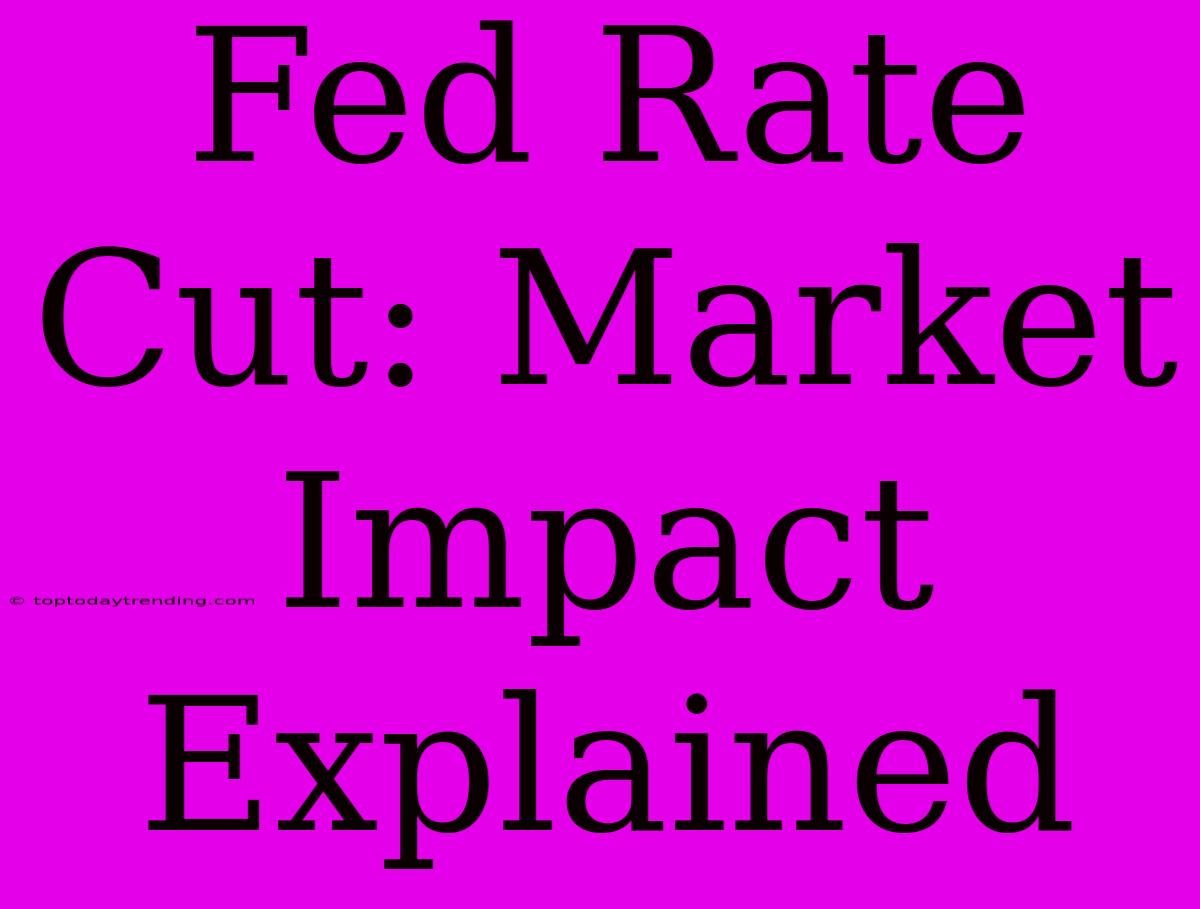Fed Rate Cut: Market Impact Explained
The Federal Reserve (Fed) plays a crucial role in the U.S. economy, influencing interest rates and monetary policy. One of its key tools is adjusting the federal funds rate, the interest rate banks charge each other for overnight loans. A Fed rate cut can have significant implications for the financial markets, businesses, and consumers alike.
What is a Fed Rate Cut?
A Fed rate cut occurs when the Federal Open Market Committee (FOMC), the Fed's policymaking body, lowers the target range for the federal funds rate. This is usually done to stimulate economic growth by making it cheaper for businesses to borrow money and invest.
Market Impact of a Fed Rate Cut:
1. Stock Market:
- Short-term boost: A rate cut often triggers a short-term rally in the stock market as investors become more optimistic about future economic growth and corporate earnings.
- Increased borrowing: Lower interest rates encourage companies to borrow money for expansion, potentially leading to higher stock prices and increased investment.
2. Bond Market:
- Bond prices rise: When interest rates fall, existing bonds become more attractive, leading to higher bond prices.
- Lower yields: Investors demand lower returns on bonds as rates fall, leading to lower yields.
3. Currency Market:
- Currency depreciation: A rate cut can weaken the U.S. dollar as investors seek higher returns in other currencies with higher interest rates. This depreciation can benefit exporters by making their products more competitive in global markets.
4. Housing Market:
- Increased demand: Lower interest rates make mortgages more affordable, leading to increased demand for housing and potentially pushing up home prices.
- Higher refinancing activity: Homeowners may refinance their mortgages at lower rates, saving them money on monthly payments.
5. Consumer Spending:
- Increased borrowing and spending: Lower interest rates encourage consumers to borrow money for big-ticket purchases like cars and homes. This can boost consumer spending and drive economic growth.
Considerations and Risks:
- Inflationary pressure: While rate cuts can stimulate the economy, they can also lead to inflation, as increased borrowing and spending drive up prices.
- Asset bubbles: Lower interest rates can contribute to asset bubbles, where prices rise rapidly and unsustainably, potentially leading to a market crash.
- Limited effectiveness: Rate cuts may not always be effective in stimulating the economy if other factors, such as weak consumer confidence or global economic slowdown, are at play.
Conclusion:
A Fed rate cut can have a significant impact on various aspects of the financial market, including stock prices, bond yields, currency exchange rates, and consumer spending. While it can stimulate economic growth, it also comes with certain risks, including inflation and asset bubbles. Understanding the potential impact of a rate cut is crucial for investors and businesses to make informed decisions.
Disclaimer: This article provides general information and should not be construed as financial advice.

